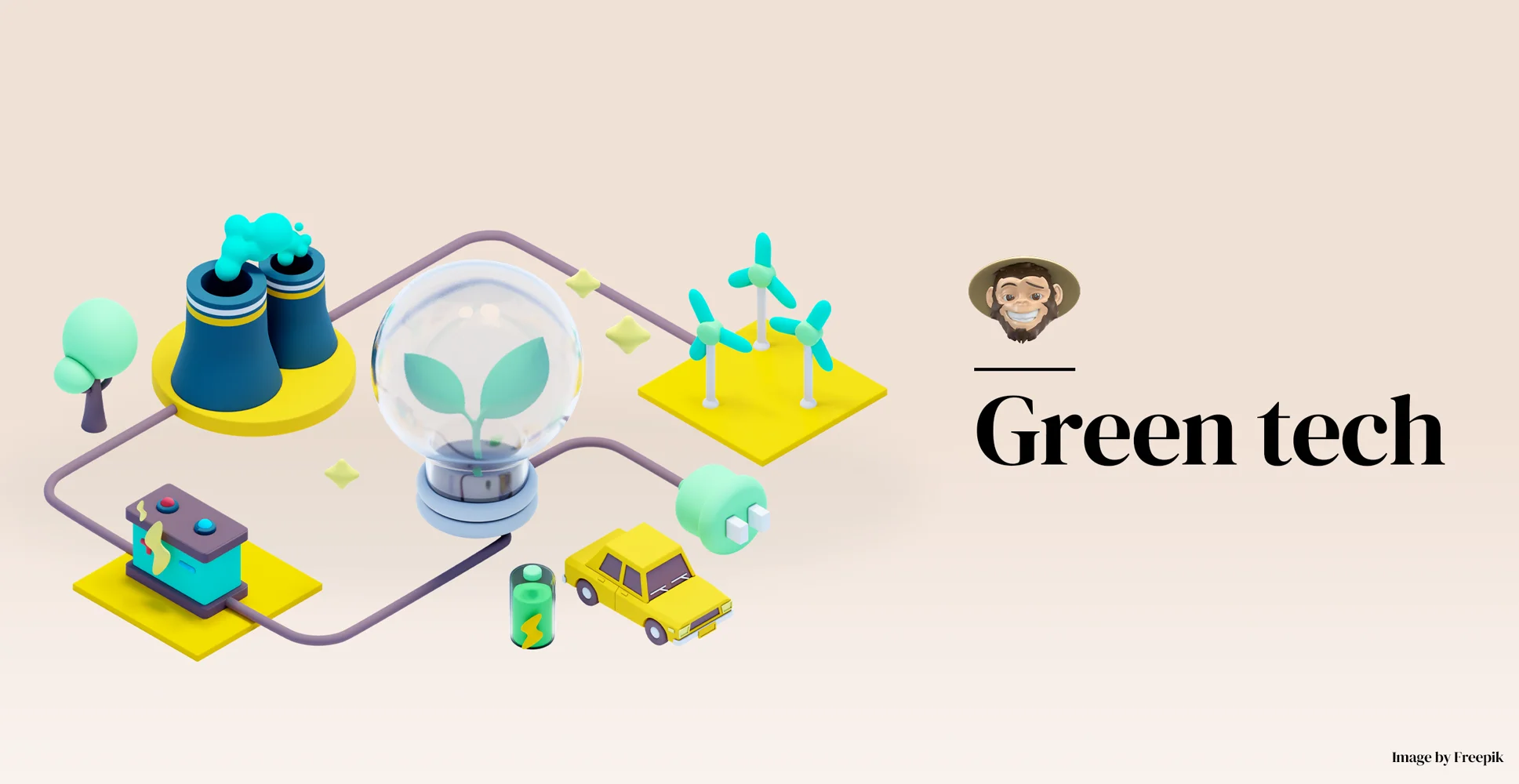As we step closer to 2024 and the world of technology keeps evolving, we find ourselves on the brink of groundbreaking innovations that promise to redefine how we live, work, and interact with the world around us.
Have you ever felt like technology advances exceptionally fast? Lately, it seems like it does. Not too long ago, our minds were blown away by phones that fit in our pockets, camcorders that fit in one hand, and mobile applications that spoke and scheduled our appointments for us. Today, you can go to the doctor without stepping a foot outside, schedule your groceries to be delivered weekly or monthly, and even get financial advice from trained computers. What’s more, you can splurge on the latest smartphone only to see a more advanced one on the horizon six months later. We have computer programs that can write entire books and play with minimal human interference and predictive medicine systems that tell us which illnesses will plague us in the future. We even have ordinary people like you and me going to space! And as time progresses, these advancements will only get more innovative, sophisticated, and more effective at meeting our work, medical, economic, educational, personal, and professional needs, to name a few.
So, in this era of rapid technological transformation, there is an ever-pressing need for us to not only stay abreast of these advancements but also to leverage them to power mobile applications and software, medical procedures, education, finances, banking services, and much more. So, seeing that keeping these advancements at the forefront of our work and personal lives is critical, we at Foonkie decided to embark on a journey to explore which are the most promising, disrupting emerging technologies for the upcoming year and beyond. Join us as we jump into the future!

Artificial Intelligence
Unless you’ve been living under a rock, you’ve heard of artificial intelligence, and you’re probably thinking it’s hardly a new, unheard-of technology. Certainly, generative AI and AI-based language models such as chatbots have been the talk of these past few years, and with good reason. So, yes, you’re right; AI is not new, and it’s certainly not an upcoming technological trend. However, AI is one of the most dynamic and transformative fields in modern technology, whose evolution is constantly marked by more sophisticated advancements, breakthroughs, and innovations. These innovations and advancements take place as our understanding of AI deepens and computing power increases, which turns AI algorithms into constantly evolving pieces of technology that become more efficient and accurate with time. As a result, and for a while now, AI has topped the yearly trending tech lists and will likely continue to do so as it keeps evolving.
So, since new AI-based algorithms, capabilities, and techniques are developed regularly, which undeniably enhances the capabilities of artificial intelligence systems, we can expect 2024 to be a year where AI gets even better. It will become much more seamlessly integrated into our daily lives as virtual assistants get more human-like, personalized healthcare solutions become more efficient at providing medical services, smart homes become more widespread, and autonomous vehicles get more innovative, to name a few. Similarly, AI algorithms will understand individual preferences and behaviors faster and more accurately, leading to even more personalized experiences in retail, entertainment, shopping, education, and healthcare. These unparalleled levels of personalization will significantly improve the user experience of digital products, enhancing customer satisfaction and engagement.
Challenges of AI
One challenge that arises from the future of AI is job displacement. The potential for automation to replace jobs and ultimately lead to unemployment in various sectors is a genuine concern. And while that might be an actual possibility, we can also expect most AI applications to augment human capabilities rather than replace jobs entirely. For instance, AI can handle all the repetitive tasks inherent to labor, such as factory assembly lines, accounting, data processing, or coding, allowing humans to focus on more valuable, creative, and strategic aspects of their jobs. Of course, whether this happens or not will ultimately be in the hands of developers and managers. Still, instead of AI becoming a threat to humans, collaboration between both, especially in complex problem-solving scenarios, will be beneficial and will become more common.

WiFi 7
Okay, we can all agree that our lives would be very different without WiFi. Wireless connectivity has become an integral part of our daily lives, and it has been a determining factor in modern society’s progress. The ubiquity of WiFi networks has spurred technology innovation, allowing developers to create new applications, services, and devices with the assumption of a reliable and fast wireless connection, driving technological advancements forward. So, the relevance of WiFi for innovation will only continue to grow as technology advances and more devices become reliant on wireless connectivity.
On that note, we can say that one of the most remarkable and most necessary technological advancements for 2024 is WiFi 7. Set to hit the market in May 2024 officially, WiFi 7 is the next-generation wireless standard, also known as IEEE 802.11be Extremely High Throughput (EHT), and is set to supersede WiFi 6E, the current WiFi standard we all know and use daily. WiFi 7 introduces us to the groundbreaking 320 MHz ultra-wide bandwidth, 4096-QAM, Multi-RU, and Multi-Link Operation to provide speeds 4.8 times faster than WiFi 6! In that sense, WiFi 7’s features will build upon and heighten the speed, capacity, wired-like responsiveness, security, and rock-solid reliability of all earlier WiFi generations. As a result, we can expect much more immersive and satisfying user experiences. And not only that, WiFi 7 will bring forth a new era of more sophisticated future technologies because it will provide significantly faster data transfer speeds compared to previous WiFi standards. These innovative speeds will be crucial for handling the staggering demand for high-bandwidth activities like 4K/8K video streaming, virtual reality, smart homes, autonomous vehicles, augmented reality applications, and any other form of entertainment or tech-driven platform that might see the light of day in the future.
WiFi 7 challenges
What’s not to love about faster and more reliable wireless connections? It sounds like a no-brainer; however, there are still some concerns that surround the otherwise awaited launch of WiFi 7. For one, WiFi 7 will face challenges in compatibility with older devices as soon as it becomes widely available. This concern affects the average consumer as well as entire nations, where stakeholders will need to invest hefty sums to implement the necessary infrastructure for WiFi 7 to deliver its benefits. What’s more concerning, however, is the fact that there are still some nations where WiFi 6E was just approved and implemented; for them, WiFi 7 will probably not be a feasible reality for some time. Also, at the consumer level, WiFi 7 routers and devices will not come cheap. The first WiFi 7 routers are hitting the market with price tags that range anywhere from $600 up to $2,300! So, while WiFi 7 is a tangible reality, we’re still nowhere near it being the norm for worldwide wireless connectivity.

Green tech
It’s no secret that our planet is suffering, and our impact on the environment hasn’t been a positive one. The byproducts of our “progress” and efforts at innovation have unfortunately led to threats to our planet and ecosystems worldwide. Whether it’s too late or not to revert the damage or at least stop it from getting worse is up for debate, but that doesn’t mean we can’t at least give it a try. That’s why, from big players in the tech arena to everyday people like you and me, we are taking the initiative to be more aware of how our presence is hurting our planet. One of these initiatives is green technology.
Green technology, also known as green tech, clean technology, or environmental technology, is an umbrella term that describes the use of science and technology to create products, applications, software, and systems with environmental care at the forefront. Green tech products are environmentally friendly and sustainable and aim at reducing the amount of natural resources needed to produce goods and services, mitigating the negative impact of technology on the planet. Green technology is poised to be a significant trend in 2024 as it encompasses a wide range of practices and innovations which are starting to become highly appealing to businesses and industries across various sectors. Some of these practices are:
Energy efficiency: Green tech aims at designing and creating products that need and use less energy to function. This includes green buildings and cars, household and industrial appliances, electric grids, mobile and wired devices, and other types of tech-driven products that generally rely heavily on energy sources.
Renewable energies: We predict that in 2024, green tech will start increasingly harnessing energy from the sun, generating electricity using wind turbines, producing power from water via dams or rivers, using geothermal energy, and extracting energy from organic materials, such as biomass and biofuels, to name a few.
Sustainable app development: Sustainability has become a critical component of technology, and app development is no stranger to this premise. Sustainable app development is the practice of building and maintaining mobile and software applications while understanding, considering, and taking the necessary steps in the app development process to minimize their environmental impact.
Waste management: Did you know that every year, we produce over 2 billion tons of waste, 50 million of which come from tech products? We can’t talk about green tech without addressing the elephant in the room: electronic waste. We expect that in 2024 and well beyond, green tech will get much better at managing and reducing tech waste via technological waste management, which refers to properly handling, recycling, and disposal of electronic devices and equipment.
As you can see, green tech is more than a cool perspective to tech; it is a necessity. It plays a critical role in fighting (and hopefully fixing) climate change, conserving natural resources, and building a sustainable future. Innovations in this field are essential for addressing environmental challenges in time and transitioning to a society that enjoys technology in a more eco-conscious way.
Green tech challenges
While green tech sounds like the cat’s meow, there are still some considerations we must address if we want to use it to help the environment and conserve the earth’s resources. In some cases, using green tech can help us reduce environmental impact in one area while causing adverse consequences in another. For instance, electric vehicles help reduce carbon emissions and the use of fossil fuel, but the batteries used to power them rely on lithium, an element that has to be extracted from South American rainforests. Additionally, most green technologies are still nascent and require substantial investments, making it difficult for individuals, companies, and governments to implement and afford them. There is also a lack of education regarding electronic waste disposal, renewable energy usage, charging practices, and other individual behaviors that we, as a society, are still lagging on.
Addressing these challenges requires a collective effort from governments, industries, researchers, and individuals. Green tech relies heavily on innovation, research funding, supportive policies, and public awareness campaigns, meaning that unless we meet all those requirements, we won’t be able to overcome the obstacles to the widespread adoption of green technologies.

Biotechnology and CRISPR
Just as we were discussing previously with AI, biotechnology is nothing new. Biotechnological applications have been around for a while; they are vast and can be found in various sectors, including medicine, food production, and environmental management. However, since biotechnology merges biology with technology to create products and technologies aimed at improving human life and the health of our planet, it is bound to evolve as emerging technologies become more ubiquitous. CRISPR, on the other hand, which stands for Clustered Regularly Interspaced Short Palindromic Repeats, is a gene-editing technology that allows scientists to modify the DNA of any organism with unprecedented precision. It is currently applied in medical research and drug development, agriculture and food engineering, and environmental care, to name a few.
As we get closer to 2024, biotechnology and CRISPR will surely evolve even further as both are poised to revolutionize fields such as medicine and agriculture with the help of emerging technologies. AI algorithms, for instance, can be applied to CRISPR to predict the most effective targets within genomes, enhancing the precision and efficiency of gene editing. AI techniques can also help analyze the vast amount of genomic data generated during CRISPR experiments, leading to more valuable insights. Moreover, CRISPR and biotechnology will be able to leverage big data analytics to encode information into DNA sequences. Scientists are still exploring how these CRISPR-based data storage systems would work, but it seems a genuine possibility that in the future, we will use DNA for data storage! What’s more, blockchain technology can be used in this case to ensure the integrity of genetic data generated and stored using CRISPR, meaning that the ledger technology can be used to track and verify the origin and authenticity of genetic information. It sounds like CRISPR-based data came right out of a Sci-Fi flick, but trust us, it’s closer to becoming a reality than you think.
CRISPR and biotechnology challenges
As it happens with most modern gene therapies and sciences, the first concerns that break the surface are ethical ones. Is manipulating and storing digital information within the DNA of living organisms ethical? How do consent and data privacy work? Clear guidelines on the ethical use of biological data storage need to be established if we want to leverage the benefits of CRISPR. Moreover, the process of encoding and decoding data in DNA cells using CRISPR technology can be expensive, not easily scalable, error-prone, and slower than traditional data-storage systems.

Conclusion
2024 is poised to be a year full of innovative trends and emerging technologies that have the potential to reshape industries and societies. Some have been around for a while but will get even more advanced and efficient, while others are groundbreaking and will start ushering in advancements that were once deemed the realm of science fiction. In the face of these transformative trends, we must embrace change, increase the adaptability of company operations, and enforce a forward-thinking environment so that we can keep fostering innovation and reap the benefits of the exciting yet complex terrain of emerging technologies in 2024 and beyond.
At Foonkie Monkey, we always strive to stay on top of the latest technologies and trends and leverage them to build products that add value to users’ lives and address pressing societal issues. So, if you have any questions regarding innovation or want an experienced team like ours to work on your new app, get in touch! We’re more than happy to help!
